The first thing you notice about Jerry Douglas is that he is a master on the dobro. The second thing is his laugh. It’s big and he does it often. Simply listening to him tell stories will make your abs hurt for a week because you’ve laughed so much. He’s like the cousin you always like hanging out with at the family reunion.
If you’re not familiar with Douglas, or the dobro, you’re really missing out on something special. This man knows how to make this instrument sing, cry, laugh and chant. Although the dobro has been around since the 1920’s, and there have been musicians who have mastered it, it was Douglas who made it famous. Yeah, the dobro showed up on CCR, Allman Brothers, Lynyrd Skynyrd and Bob Dylan albums, as well as many bluegrass records, but Douglas just took it to another level. He’d probably shake his head and laugh and throw names out at you like Josh Graves and Sam Bush to listen to, but really, when it comes to modern day dobro, Jerry Douglas is your king.
Need proof? Let’s talk facts. He’s appeared on over 1500 songs. He’s won fourteen Grammys. He’s played dobro in just about every genre of music there is, including classical, Jazz, Indian and Celtic. He’s been a stalwart member of Alison Krauss’ Union Station, the Earls Of Leicester, the Country Gentlemen and leader of his own Jerry Douglas Band. And on top of all that, he’s a producer. And if you don’t take my word on it, how about John Fogerty’s. As he told Vintage Guitar in 2006: “Once you’re tickling a Dobro, you eventually find Jerry Douglas. In that whole process, I realized that Jerry Douglas is my favorite musician of all time. He just does it to my entire psyche – my heart, my memory, the whole thing.”
The whole package is currently showcased on John Hiatt’s latest album, Leftover Feelings, which was made with Douglas and his band. An album so good it should win every award this year, the eleven songs that Hiatt penned and Douglas and company helped bring to life, are superb. Hiatt is in excellent vocal tonality and wit while Douglas makes the whole thing shine. “Mississippi Phone Booth,” “Long Black Electric Cadillac” and “All The Lilacs In Ohio” are standouts among a group of standouts. And according to Hiatt, in an interview I did a few short weeks ago, “Besides being the best dobro player alive currently, [Douglas] is just an amazing musician. He’s gone so far beyond just the instrument, the dobro, and he can play any style of music on that instrument, which is saying a pretty good deal.”
Douglas, who was born and raised in Ohio, and of Scottish ancestry – “My people were from the borders down there on southern Scotland. We had castles, we had lakes, we had lochs, we had everything. We ruled! But we also stole sheep and cattle to keep the English mad,” he said during a 2017 Songfacts interview – actually began playing music on an ordinary guitar when he was a kid. He fell in love with the dobro after seeing Flatt & Scruggs. In 1979, he released his first solo album, Fluxology. He received his first Grammy nomination in 1982 as part of The Whites album, You Put the Blue In Me. He won his first Grammy the following year with The New South for Best Country Instrumental Performance. He joined Alison Krauss in 1998, received a tornado of attention with the Oh Brother, Where Art Thou? soundtrack in 2001 and in 2017, he released What If with his band, which received a Grammy nomination for Best Contemporary Instrumental Album.
Let me tell you, the man has been on a roll forever. I recently chatted with Douglas about his love for the dobro, finally making a record with John Hiatt, getting back on the road and being noticed by Ray Charles.
Hi Jerry, how are things up your way?
I’m good, getting back into the swing of things (laughs)
Have you been missing being on the road?
No! (laughs)
Don’t let me ask your wife that question
(laughs) She’s been wishing I’d go away! But you know, I’ve been doing this for forty-eight years. I counted it up and that’s the first time I’ve ever had a vacation like that. That was every musician’s dream after a while: I wish I could take a year off, I would be so much better.
Are you better?
You know, in some ways, yes, in some ways no. There’s going to be a lot of music out there, as nobody has played for a year and a half, and it’s going to be bad for a while cause they know what their hands need to do but their hands just aren’t ready for it yet, you know (laughs).
But I’ve been playing. I played all the way through the pandemic, on people’s records and live stream things, so I played every day but not with the band, not like it was all for real. It was all practicing by yourself. We didn’t play together for over a year so when we did play together, it started coming back pretty fast. So I’m not afraid, I’m ready! And I know people are ready. I’ve already done some shows that had caps on them, like a 500 cap show, and those were all great and everybody had fun. The hardest part for me seems to be remembering what to say between songs and stuff (laughs). That snappy dialogue!
You and John Hiatt have a tour coming up.
Oh yeah, I’m looking forward to that. We’re already talking about Europe next year so it’s going to go on. It’s a wonderful thing to fall into and I want it to last as long as possible.
What is that going to be like?
It’s like the record. I mean, we can do the record exactly but we’re going to be doing all of his songs, you know. We’re going to be doing other stuff too, all the hits.
And you know every one of them?
Well, you think you do because you’ve heard them so much and then all of a sudden it takes a turn you didn’t remember (laughs). It was one of those little divots in the recording where you didn’t pay attention to it right then because it wasn’t the line that you were expecting – and we’ve got a bunch of those, “Slow Turning,” and I put in for him to do “Like Your Dad Did,” which was a song off Bring The Family. It’s where the whole family is sitting at home and the little girl says grace at the table and she wishes that her brother’s hamster would die in hell or something like that (laughs). It’s like a real life family situation at the dinner table (laughs). That one got my attention on that record as much as “Lipstick Sunset” did.
John remembers everything and files it all away and writes about it later. I don’t know how he does it but he’s one of those guys, and there’s very few of them, but he is one of them. Dylan and James Taylor and John Prine, that kind of guy. Those kinds of writers that just coin phrases and whether you know it or not you’re saying things that they wrote down in a song. They were the first ones to say it.
Why did it take you and John so long to get together to make some music? You’d think ya’ll would have run into each other a billion times.
(laughs) You’d think so because it’s Nashville, but you don’t, you don’t see people that live here unless you’re 500 or 1500 miles from home. That’s when you see people from Nashville, you know. For a whole summer you’ll just see them out at festivals but not in Nashville. But John and I ran into each other a few times at like recording stuff. The Dirt Band’s second Circle record was the first place, I think. He came through that turnstile of people. I played on the whole record so I had that same chair every day for two weeks and he came through with Rosanne Cash and they sang a song. At the time, I didn’t know that he had written “This Is The Way We Make A Broken Heart” for her. They didn’t do that song but I was just sitting there with a deer in the headlights look most of the time, because of learning all these new songs and playing one right after the other. But I really, really enjoyed being with him for that hour that we had.
Then I ran into him backstage at the Newport Folk Festival. He was playing there and I was there with Lyle Lovett and we sat down backstage and talked for about an hour, sitting on a picnic table, and I just thought, you know, I want to know more about this guy. Most people that we meet on the road we get to talk to them for about five minutes and then they’re gone from our life. Sometimes you go, this discussion needs to go on, I’d really like to get to know this person, and it just doesn’t happen. But we kind of forced it by finally becoming under the same umbrella of management. Of course we knew each other. I mean, he gave a speech at the Americana Awards a couple of years ago and it was him introducing his daughter Lilly and I got up there to give a speech right after him and he had left his notes there so I folded them up and it turned out he was sitting right behind me so I gave him his notes back. I said, “I think you might want to keep these.” And that struck up another conversation. So our conversations have always been short but we’re on each other’s radar, I’ll say that. And then he had the gall to move into my neighborhood. House prices plummeted! (laughs).
Tell us about how this project with John came together.
We were first thrown together with this from our managers, Ken Levitan and Brian Penix. They said, “Hey, how do you feel about Jerry Douglas producing the record?” And he went, “Wow, yeah!” Then they told me and I went, “Yeah, Yeah, Yeah!” But I had no idea what I was getting into at that point. I just thought, he writes great music, what can be wrong with this (laughs). And I could use my band. So I thought, oh my God, this is like a dream come true kind of situation, cause I know my band and I know what they can do and I know they can cover anything.
So we went in and the pandemic hit. We were supposed to do this in April of 2020. So that wasn’t happening as the studios were closed but we finally got into RCA B that belongs to the Country Music Hall Of Fame. It’s where Chet Atkins made all the records with Elvis and the Everly Brothers and Dolly Parton and everybody recorded in that studio. So because covid had hit Nashville, they couldn’t do tours through the studio so we all masked up and went in there and separated ourselves in the room and made this record in about four days.
So John already had the songs?
He already had the songs and I kept going over and getting more songs from him and we finally arrived at a list of songs. Then I gave them to the band and Carmella Ramsey came in and sang on some of the record. It all came together just fine and the songs were fun and the band translated the fun to the record. And I made a really good new friend.
Which song on here do you think really sums up John Hiatt as a songwriter?
Wow, that’s tough. But there’s a song on there that everybody is going to talk about and it’s a song about his older brother committing suicide. That’s been sort of a theme in John’s life, it’s not his only one, and he’s been through some really rough stuff. That one [“Light Of The Burning Sun”] is on there and he was eleven years old when this happens, so after all this time now he’s written this song and he’s able to perform it, you know, at least on this record. I don’t know if we’ll be doing it a lot live, probably will, but it’s got to be a tough thing to do, to sing about.
But there’s that one and there’s another song called “Mississippi Phone Booth” that’s very biographical. When he’s standing in the phone booth, “Please don’t hang up, tell Jesus I’m out of dimes.” (laughs) He does that kind of stuff to you. He’ll twist you up like that, he’ll feed you a line like that. There’s a line in the last song on the record and the song starts, “Eating honey from the Catskills,” and I just went, What! (laughs) Where is this going to go? And you just go with him down this rabbit hole and he explains it all. It’s the craziest thing. And you can go back to any of his songs that you’ve heard and you can do the same thing with them. You start understanding them and that’s when you need to worry, when you start understanding what he’s talking about (laughs).
As a producer, since you brought up the song about his brother, how did you approach recording that with him since it’s such a sensitive subject?
Well, first I had to do a little bit of coercion to get him to feel okay about recording it. I said, “I think people need to hear things like this, John.” And on the back of the record there is a note to the Suicide Prevention Number; it’s this very serious thing, especially in this pandemic that we just went through. So I approached it with kid gloves. I decided to record it late because I wanted him to be a little more vulnerable. I thought, well, I’ll wait till I’ve got him a little more tired and then we’ll get a really good reading of this song and we’ll play it down. It went okay but it didn’t do what I had thought it would do to him. The next morning we came in and did it first when he was fresh and he nailed it. So I don’t know how to explain that. I mean, as a producer, you have to have some level of psychology degree to get things from people that you need for a record and have a way to discuss it with them. I figured that when he was wide awake and perky and ready to go that he wouldn’t be able to go there. But he did and he was able to do it perfectly.
When you started playing the dobro, were you already playing guitar?
I was playing guitar but I had this really cheap Sears Silvertone guitar and my father raised the strings up on it for me and I had just a piece of copper tubing for a bar, for a slide and that’s what I learned with until I was about twelve, thirteen years old and I got a real dobro, cause they were hard to find in northeastern Ohio.
Was it an adjustment going from guitar to dobro physically?
Yes, it’s not totally different because three of the strings in the middle of the fingerboard are tuned exactly the same, and then it gets strange towards the outsides. I mean, I play it just in a straight G tuning most of the time. I couldn’t use just a regular guitar tuning so I had to really start listening to records. There was no YouTube, there was no tablature but there was electricity! (laughs) So I had this thing called a record player that I listened to over and over and over and over and over again until I figured it out. There was no teacher, nobody to tell me what to do and the first time I played it for somebody who actually played dobro and had a dobro, it was like speaking French for the first time to a person from France. You weren’t sure what you were saying was orthodox or completely backwards or what, you know, you just called them some terrible name or something (laughs). But I got lucky and the instrument really felt not easy to me but it came to me comfortably, how to play it, and I worked on it for years and worked with a lot of great bands and had all kinds of influences all the way through.
How long did it take you before you noticed that you were being more of yourself as a player instead of trying to emulate somebody else?
When I was about fifteen, sixteen years old. The guys I wanted to emulate, guys who I wanted to find my voice from, were Josh Graves and Mike Auldridge. I had heard everything they recorded, or thought I did, and played like both of them and it sort of morphed into what I do now. But I played with a lot of fiddle players who played fast tunes and really fast, different time signatures and things like that. Then I started exploring Jazz and rock & roll and everything. It’s a bluegrass instrument, the dobro, but it suddenly got legs and I went into playing all these different kinds of music with it. I find it to be a fairly unlimited instrument. I’m going to play classical music with Edgar Meyer and I just played with Old Crow Medicine Show downtown. So I’m always in suspense, you know. I don’t know what kind of music I’m playing from day to day.
When you made your first solo album in 1979, was the music world ready for your kind of music at the time?
I don’t know. I was just stepping out. It was a strange thing. Dobro players didn’t make solo records but Mike Auldridge did. Mike Auldridge was one of my mentors. He sang a little bit but he surrounded himself with really good musicians and came up with good ideas and that was sort of the basic templet for me, just to write some songs of my own but redo some older songs with a newer style and still surround myself with great musicians like Tony Rice and Ricky Scaggs and Sam Bush, those people, that would bring me some integrity at the same time (laughs).
What did you think of people like John Fogerty playing dobro?
Well, I remember seeing John Fogerty holding a dobro on the front of Green River and I took that to my sixth grade class and I said, “I’m going to play with this guy someday.” And they were all going, “Yeah, Creedence, yeah right!” (laughs) It only took me thirty years but I did it. But they didn’t play the same kind of style that I came from. I came from a bluegrass background and those guys were inventing rock & roll. They were coming from a more blues background, which is a really good stage for dobro because it’s slide and it sustains and it emotes and it can do all these things and sound like the human voice. It’s got such a wide variety of voices so I see why they were interested in it.
Then Fogerty came to my house and looked at my dobro collection. You know, it’s nuts for me to think about where the dobro guitar has taken me. It’s a strange attachment we have, me and that guitar. But Fogerty, he said, “I want to play dobro like you.” And I said, “No man, you play dobro like you. Don’t change that, don’t do that to me.” (laughs) And other people used to do different things than I use it for but if I get around them I fall right into their wheelhouse or what they’re playing. It’s like being a musical chameleon, you just keep changing colors and adapting to situations.
That being said, you’ve played with so many people. Was there anybody’s music that you played on that it took a little while to interconnect with?
Let’s see, yeah, there was one record that I played on and this fellow, he was the French “Don’t Worry, Be Happy” guy (laughs). We were making a record and I was playing sort of this atmospheric, weird, crazy stuff behind him on all these records and then there was this song that was this East Indian song, right. I love Indian music and he said, “Now, sound like you’re working at a Tandoori Oven.” (laughs) Sometimes just the descriptions of what they want you to do can be a little baffling. I must have pulled it off because he seemed happy when it was all over.
What about playing with Chris Hillman?
I was working with him first with Dan Fogelberg and we toured and was Chris playing bass? Yes, he was playing bass and then I recorded with him playing guitar and mandolin on a Desert Rose record or Chris Hillman record, on a Chris Hillman/Tony Rice record and a few different ones, Herb Pedersen and Chris and Tony and Larry Rice. But he never put off any kind of airs like, hey, I’m a Byrd, you know; he never comes across like that. He’s one of the nicest people you’ll ever, ever meet and I love that guy. He’s a good fella.
What did you do with Ray Charles?
He did a duets record called Friendship . There were like twelve people in the room but Ray Charles and Pig Robbins, the other amazing blind piano player in Nashville, they were sitting across from each other and I was about twelve feet from them and neither of them had headphones on. They were just listening to each other and that’s how we did it. But there was like a drummer and a full band in there and I played the solo and we went in to listen and Ray hadn’t heard what I did. He had no idea that I was even there until the dobro started taking the solo and Ray said, “What’s that?” (laughs) They said, “That’s a dobro, Ray.” And he said, “Oh, what’s that?” (laughs) But he must have liked it cause it’s still on the record.
I did another recording session with him. I was walking through a house that I had sold for the last time, just walking out, and the phone rang and it was like the last phone call going to be in this house and it was Ray Charles. He wanted me to come down and play on something really fast and I did. I pulled the phone cord out of the wall of that house so that would be the last call and I went to the studio (laughs). It was around 1985. I don’t remember everything that happened that day but I do remember that part.
How much fun did you have riding around in that old Cadillac making the video for “Long Black Electric Cadillac”?
Oh, that was the greatest. It was a really cold day, cold and clear. You could see the sky was so blue and that car was so beautiful, black with red interior. John had just had surgery on his rotator cup. I said, “You’re not driving because you can’t work a turn signal.” So I ended up driving the car all day long, which was the greatest. It was like having a yacht, like a boat out in front of you that you have to maneuver as well as the rest of the car. But it was forty degrees so we had the heater cranked on eighty blowing on us and I got the worst sunburn on my face that day. Not thinking, it being hot in the car and cold outside, so the sun just baked my forehead that day. I was thinking, oh, I’m cold, but no, I was hot (laughs). But just driving around in that car, it was so much fun. That’s the best job I ever had in the music business, chauffeuring John Hiatt around. Riding with the king! (laughs).
How many of your original musical goals do you think you’ve met?
Oh, I just wanted to be good enough to keep a job! (laughs). That was all I had on my mind at the time. I hadn’t set out to get this many of these or this many of those or play with this person or that person. Well, that’s a lie. I really did want to play with Jackson Browne and James Taylor and a bunch of those people, and I have and that’s been very fulfilling. And John Hiatt. So anything from here on out is gravy. I’m totally happy with how it’s gone and I think it’s gone well because I didn’t put preconceived notions on playing a dobro on the radio. Chances of that are pretty slim (laughs). But I did put demands on myself but I just took it one step and one day at a time. And this is where I am today.
Portrait by Patrick Sheehan; live photos by Leslie Michele Derrough




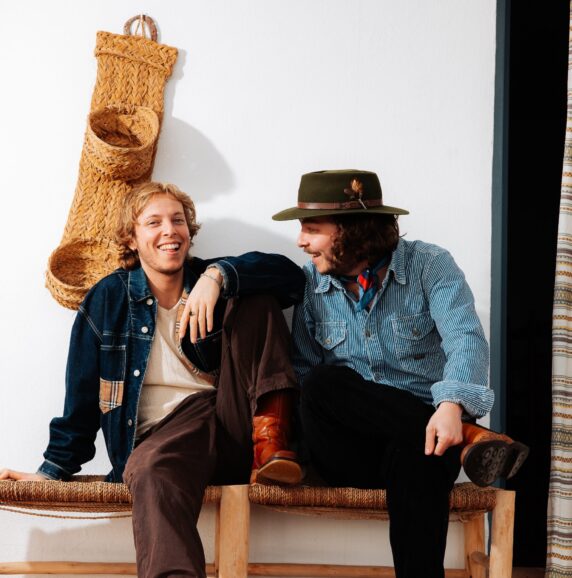
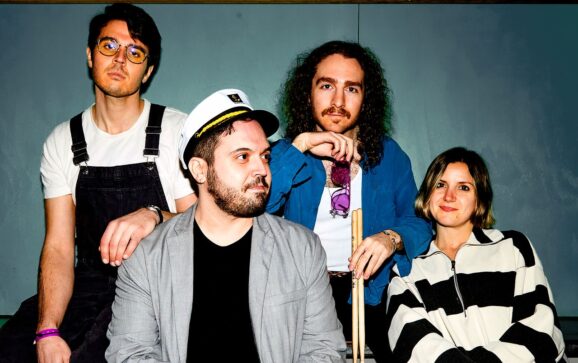
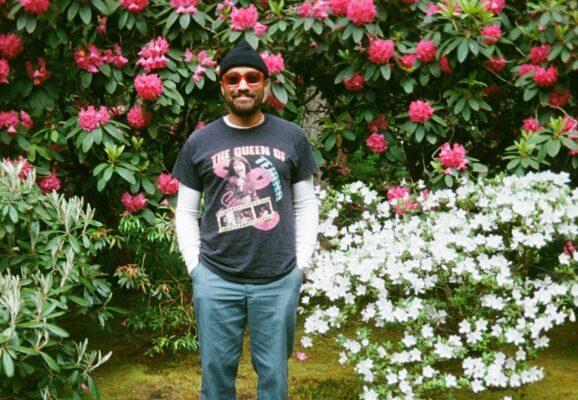



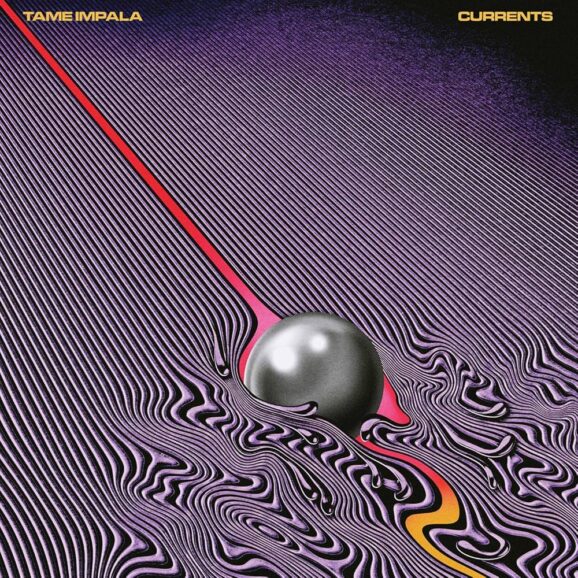
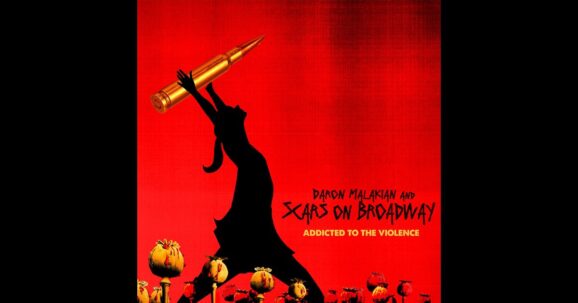

One Response
Leslie,
Such a good writer! Loved the Jerry Douglas article